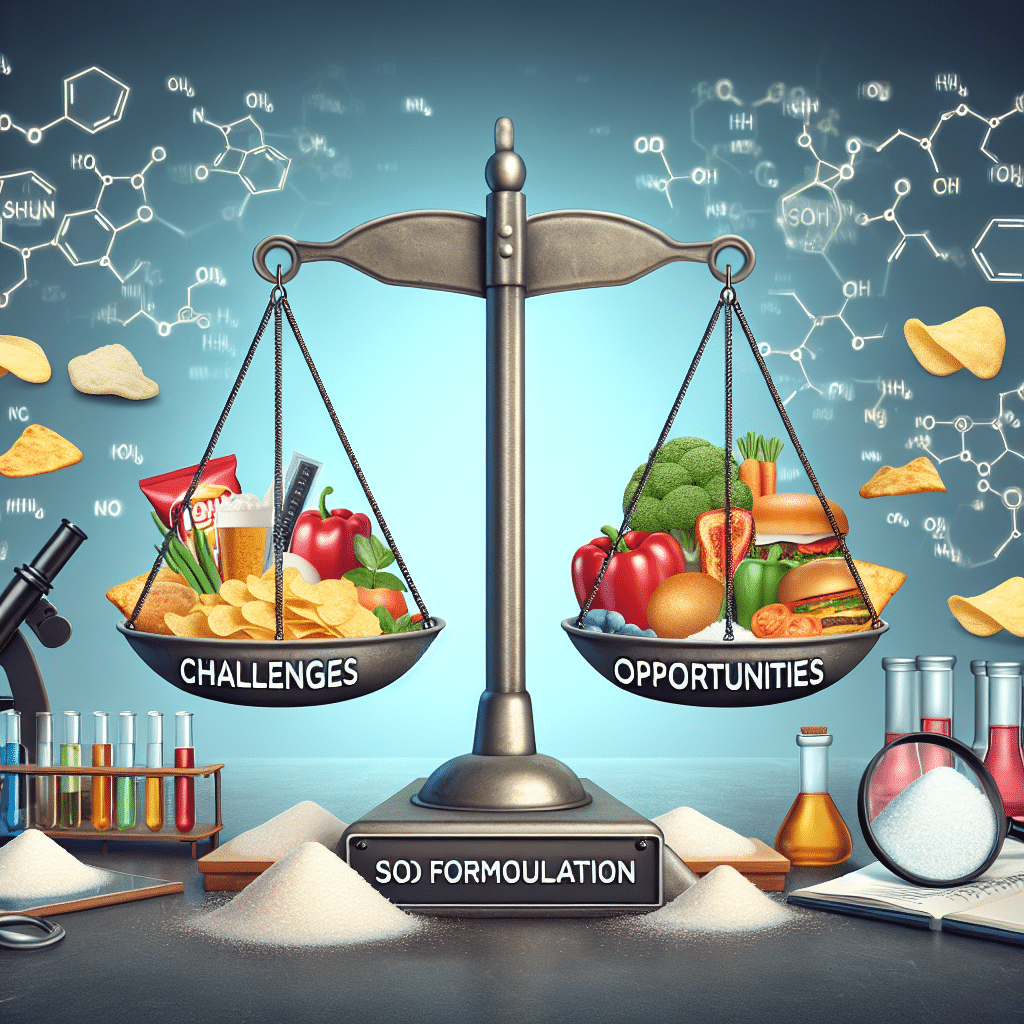Challenges and Opportunities in Sodium Reformulation
-
Table of Contents
- Sodium Reformulation: Navigating the Challenges and Seizing Opportunities
- Understanding the Need for Sodium Reduction
- Challenges in Sodium Reformulation
- Opportunities in Sodium Reformulation
- Strategies for Successful Sodium Reduction
- Case Studies and Statistics
- Conclusion: Balancing Health with Flavor and Function
- ETprotein: Your Partner in Health-Conscious Food Innovation
Sodium Reformulation: Navigating the Challenges and Seizing Opportunities

As global health concerns rise, the food industry faces mounting pressure to reduce sodium content in their products. Sodium reformulation presents a complex challenge, balancing public health objectives with consumer preferences and technical product requirements. This article delves into the intricacies of sodium reduction, exploring the challenges and opportunities that food manufacturers encounter in this process.
Understanding the Need for Sodium Reduction
Excessive sodium intake is linked to high blood pressure, heart disease, and stroke. The World Health Organization recommends a maximum intake of 2,000 mg of sodium per day, yet many populations consume far more. Processed and packaged foods are the primary sources of dietary sodium, prompting calls for reformulation efforts across the food industry.
Challenges in Sodium Reformulation
- Consumer Taste Preferences: Sodium plays a crucial role in the palatability of food. It enhances flavor, masks off-notes, and contributes to the overall taste experience. Reducing sodium without compromising taste is a significant hurdle.
- Technical Functionality: Beyond taste, sodium has functional roles in food preservation, texture, and stability. Finding alternatives that can perform these functions without sodium is technically challenging.
- Cost Implications: Alternative ingredients and reformulation processes can be more expensive, impacting the cost of the final product.
- Consumer Acceptance: Even if a product maintains its taste and quality post-reformulation, consumer skepticism towards ‘low-sodium’ labels can affect sales.
Opportunities in Sodium Reformulation
- Health and Wellness Trends: Growing consumer awareness about health and wellness creates a market for low-sodium products.
- Innovation in Food Science: Advances in food science are leading to new salt substitutes and flavor enhancers that can mimic the taste and function of salt.
- Regulatory Support: Governments and health organizations are supporting sodium reduction initiatives, providing a platform for industry collaboration.
- Brand Differentiation: Companies that successfully reformulate can position themselves as leaders in health and innovation.
Strategies for Successful Sodium Reduction
Successful sodium reduction requires a multifaceted approach. Gradual reduction over time allows consumer palates to adapt. Blending salt with substitutes like potassium chloride can maintain flavor while reducing sodium content. Innovations such as flavor modulators and microencapsulation also offer promising avenues for maintaining taste and functionality.
Case Studies and Statistics
Several companies have made significant strides in sodium reduction. For instance, a major soup manufacturer managed to cut sodium by 20% without affecting sales by gradually reducing levels over several years. Statistics show that consumer acceptance of low-sodium products is growing, with a market analysis predicting a continued rise in demand for such products.
Conclusion: Balancing Health with Flavor and Function
The journey towards sodium reformulation is fraught with challenges but also ripe with opportunities. By leveraging food science innovations, understanding consumer behavior, and committing to gradual reformulation, the food industry can make significant strides in public health without sacrificing product quality or consumer satisfaction.
ETprotein: Your Partner in Health-Conscious Food Innovation
As the food industry evolves to meet the demands of health-conscious consumers, protein plays an increasingly important role. ETprotein offers a range of high-quality protein products that can complement sodium-reduced formulations. Their organic, non-GMO, allergen-free proteins are ideal for enhancing the nutritional profile of food products while supporting the industry’s move towards healthier offerings.
About ETprotein:
ETprotein, a reputable protein and L-(+)-Ergothioneine (EGT) Chinese factory manufacturer and supplier, is renowned for producing, stocking, exporting, and delivering the highest quality organic bulk vegan proteins and L-(+)-Ergothioneine. They include Organic rice protein, clear rice protein, pea protein, clear pea protein, watermelon seed protein, pumpkin seed protein, sunflower seed protein, mung bean protein, peanut protein, and L-(+)-Ergothioneine EGT Pharmaceutical grade, L-(+)-Ergothioneine EGT food grade, L-(+)-Ergothioneine EGT cosmetic grade, L-(+)-Ergothioneine EGT reference grade and L-(+)-Ergothioneine EGT standard. Their offerings, characterized by a neutral taste, non-GMO, allergen-free attributes, with L-(+)-Ergothioneine purity over 98%, 99%, cater to a diverse range of industries. They serve nutraceutical, pharmaceutical, cosmeceutical, veterinary, as well as food and beverage finished product distributors, traders, and manufacturers across Europe, USA, Canada, Australia, Thailand, Japan, Korea, Brazil, and Chile, among others.
ETprotein specialization includes exporting and delivering tailor-made protein powder and finished nutritional supplements. Their extensive product range covers sectors like Food and Beverage, Sports Nutrition, Weight Management, Dietary Supplements, Health and Wellness Products, and Infant Formula, ensuring comprehensive solutions to meet all your protein needs.
As a trusted company by leading global food and beverage brands and Fortune 500 companies, ETprotein reinforces China’s reputation in the global arena. For more information or to sample their products, please contact them and email sales(at)ETprotein.com today.














